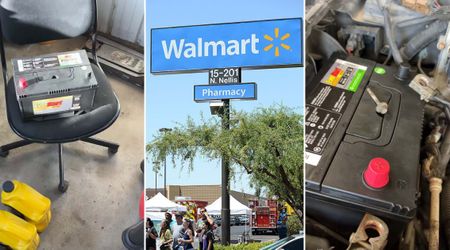Struggling with credit card debt? Here are some options to get debt relief

Several Americans are struggling with credit card debt. The total credit card debt in the US skyrocketed to $1.13 trillion up till Q4 of 2023, as per Federal Reserve Bank of New York’s data. Many users are looking for ways to reduce debt or even seek forgiveness. While everyone qualifies for debt relief, there are many forms of it that have special requirements for qualification. Therefore, it is important to evaluate all the options and choose what’s best for you.

Here are Some Ways to Get Debt Relief
Debt Settlement
Through debt settlement borrowers negotiate with creditors and convince them to forgo a certain portion of the debt. Borrowers can lower their outstanding loan amounts and make fewer payments. However, to qualify for debt settlement, borrowers need to prove that they are genuinely facing financial hardship and they are unable to make payments.

They need to prove that significant life events like job loss, medical emergencies/expenses, divorce, or other losses have impacted their ability to pay their credit card bills.
Borrowers need to produce all the necessary documentation, such as unemployment benefits statements, medical bills, or court documents to support their case. Thus, with definitive proof, borrowers may qualify for partial credit card debt forgiveness.
While borrowers can negotiate with their creditors on their own, they can also seek help from credit counseling agencies to guide them through the process or do it on their behalf. On the other hand, some for-profit companies also offer debt settlement programs, which can help borrowers get out of credit card debt.
Debt consolidation
Debt consolidation is one of the best options for credit card debt relief, but it may be the hardest to qualify for. Under debt consolidation, the borrower's multiple debts are combined into a single personal loan at a lower reasonable interest. The repayment process is streamlined into one periodic payment which helps creditors pay off debt faster.
However, to qualify for debt consolidation with a reasonable interest rate, borrowers typically need a credit score in the mid-600s, as per CBS News. Furthermore, borrowers may need at least 20% equity in their home, and some proof that you can pay the loan back to qualify.
Debt Management
For those who are absolutely struggling to get their debt under control, seeking help from external agencies may help. Borrowers can opt for debt management plans which are created with the help of nonprofit credit counselling agencies.
The counsellors working for the agencies negotiate new terms for consolidation of debt on behalf of borrowers. After this, the borrowers’ credit accounts may be closed and they may be barred from opening new ones for a period of time, as per NerdWallet.
Bankruptcy

Bankruptcy is essentially the last option for borrowers to get out of credit card debt. Filing for Chapter 7 wipes out all unsecured debt such as credit cards. Filing for Chapter 13 bankruptcy lets borrowers restructure their debts into a payment plan over 3 to 5 years. However, bankruptcy can stay on a borrower’s credit report for 7 to 10 years, but the credit score may bounce back in the months after filing, as per NerdWallet.
























